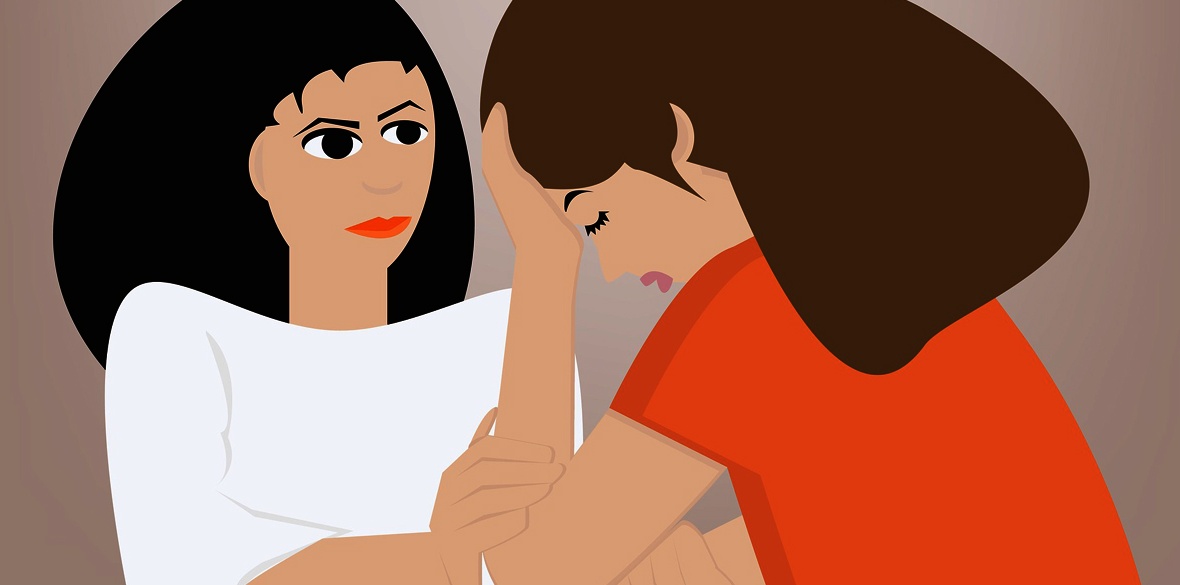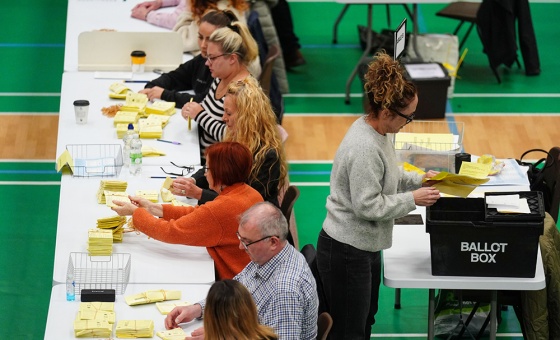This is the last article you can read this month
You can read more article this month
You can read more articles this month
Sorry your limit is up for this month
Reset on:
Please help support the Morning Star by subscribing here
AS WE tentatively move away from the pandemic, we can see what is left is a mental health crisis of proportions we haven’t seen before.
Chronic underfunding and a lack of resources existed before the pandemic, but now with these additional people needing help it is an emergency.
Many believe the answers to this are in the community, but with the safety net eroded and a lack of facilities, how can that be?
We are supposed to have a system of “community care” but many service users who have been through or are still in the system would argue that even the term “community care” is a misnomer, as the “care” is often missing or so fragmented it is barely there.
This leaves individuals struggling, having to traipse to endless appointments and in many cases deteriorating to such an extent that it leads to a crisis. As such, this is an area of healthcare that urgently needs reform, with funding to match the current need.
In terms of services, the problems start as soon as a referral is made by a GP to the Community Mental Health Team (CMHT). Under-resourced, these teams bounce back these service users to the GP by expecting the already overwhelmed GP surgeries to monitor the service user instead.
If service users do get past the gatekeepers, they are expected to fit into a box, even if that box is too tight or uncomfortable. They are told “this is what we provide,” rather than asked — “what do you need?”
Expecting service users to fit into what professionals decide is appropriate can often undermine the expertise the service user has in their own condition — especially when that might be a physical health problem they have as well as their mental health problems.
This is something that Dawn found problematic: “There’s an atmosphere of being almost being afraid of such service users so they decide to focus on controlling the service user. Behaviour that would be seen as coercive control in relationships is often handwoven in community mental health teams.”
It’s crucial for mental health services to meet and treat service users where they are at both physically and psychologically. Yet far too often they fail on both counts, with services miles from home and a set of assumptions that if the service user displays X symptoms then the solution is Y. So, what could an alternative plan look like?
In the past, mental health day services got a bad rap and this was justified, but when they were shut down there wasn’t much left to replace them.
Service users want a not-for-profit charity or voluntary organisation to work with them in setting up user-led centres. These would be where service users can self-refer (rather than deal with gatekeepers) with links to benefit, housing and employment and advice centres.
They could also be where any appointments with psychiatrists, counsellors and psychologists, or other such professionals take place. Above all, they need safe places where service users can meet socially. After the past two years, lonely and isolated service users have suffered greatly under lockdowns, exacerbating mental health conditions.
Rather than the service users going to the professionals, the professionals come to the service users. This centre could also link up with suicide and trauma services as well as initiatives for young people and any user-led groups in the community.
Satellite services to those who can’t travel must be provided offering all that the service user needs, rather than what the professional thinks they want.
There are models of how such centres could work. For example, for people who have cancer there are Maggie’s Centres (www.maggies.org) where patients can access advice on benefits amongst other issues and get support from psychologists. This model could be replicated for mental health.
Statutory care often stops during working hours — leaving few options for those who don’t need to be admitted to hospital but do need emotional support. Some service users who have tried to access the Samaritans more than once during an emotional crisis have found themselves blocked. The Samaritans are often viewed as the last scrap of the safety net, so if you can’t ring them who can you ring?
The answer might be this move away from community care as we know it now. When it was first proposed by founder and CEO of Suicide Crisis Joy Hibbins she said “nobody wanted to commission a service run by a service user,” but this gave her and her team an opportunity to rethink services as they were then.
“It meant we could modify and adapt our model of service in its first few weeks. We had a plan to set up a Suicide Crisis centre, but our service users showed us that we would need to provide more than this. They needed home visits as well, because not all service users would reach us when they are in crisis. And they needed us to provide a night emergency service, too.
“If we had been commissioned to set up a service, we would have been commissioned just to set up the Suicide Crisis centre and we would probably not have been able to alter it in this way after we had started to provide the service.”
Although there are some disadvantages around funding, there are a lot more advantages of being separate. For example, the crisis resolution and home treatment teams have a heavy and single reliance on distraction techniques.
Hibbins said: “When someone is at the point of ending their life, they may be at a point where such distraction techniques are no longer helpful and they need a different approach. It’s so vital to take an individual approach.
“There’s also a strong emphasis within psychiatric services on ‘taking responsibility’ at the time of crisis. But when someone is highly distressed, it is extremely difficult to be able to think clearly enough to navigate your own way out of a crisis. Our approach is to actively reach out to individuals and to intervene to protect their life.”
Other advantages are that the Suicide Crisis service can reach people who are off the radar — who have fallen through the cracks and are no longer in touch with statutory mental health services and their GP.
Being run by and having service users with lived experience of mental health services at the forefront gives the service credibility and the knowledge of what is missing or needed in the mental health system. This leads to innovation, such as the Suicide Crisis team setting up a centre for those who are suffering from trauma, opened two years ago.
So, there are models of how such services could work. The suicide and trauma centre is in Gloucestershire, but with funding there is no reason why it can’t be replicated in other regions. To help, Hibbins outlined her experiences in two books — one on getting the centre started (www.mstar.link/SPPcentre) and another on how to help someone who is suicidal (www.mstar.link/SPPguide).
If such mental health community resources could be set up, they could alleviate pressure in the system by enabling service users to seek help before it comes to a crisis.
Rob, who cared for his son, who ended up languishing for years on out-of-area mental health placements said: “Such services would have the potential to be a massive cultural shift in mental health, communities and society as whole.”
Ruth F Hunt is an author, freelance journalist and service user.










